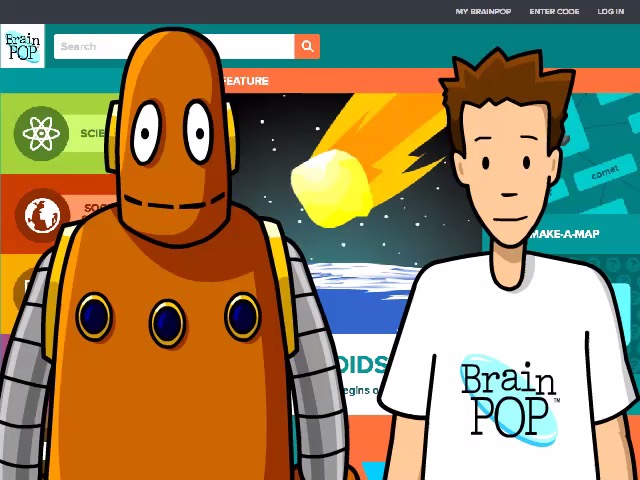How To Introduce The Idea Of A Variable In An Algebraic Expression
I have a better understanding of what it takes to help students develop number sense in their early years of elementary school. So, when we start to give them algebraic ideas in 6th grade, we are asking them to take their concrete knowledge and apply it to a conceptual idea, what is the value of x?
Word Wall
Start a word wall with vocabulary specific to algebra. Math has its own language. It's important for students to continue to add to their mathematical vocabulary in order to be successful in math.
Algebra - A branch of mathematics that introduces symbols for unknown quantities and rules for how to manipulate those quantities.¹
Variable - A symbol used in algebra to represent a quantity without a fixed value.¹ x y b c
Constant - A number on its own.² 6 20 74
Coefficient - A number multiplied to a variable²
4x 10x 3y 18y
Algebraic Term - A number or a variable, or a number and variable multiplied together²
Operation - Mathematical manipulation, doing something with the values.²
Addition (+) , Subtraction (-), Multiplication (x), or Division (÷)
Algebraic Expression - A group of terms separated by an operation, +, or -.² 6x + 5
* Things to consider as you teach this concept. Students will be comfortable using the symbol X to indicate the operation of multiplication. They need to learn they will no longer want to use the X when they are learning algebra. The symbol is commonly used as a variable, an unknown quantity. To see the expression, 3 x X, will not make any sense to them. They will need to make the transition from the X symbol to a dot, *, to the idea that 3x is 3 multiplied by x. (Sorry, I could not find a solid dot to use.)
Videos
Using videos as another source of information helps students understand the concepts they need to learn in advance. Typically a video shows an entire sequence of steps and mathematical manipulations. It provides a overview of an idea or concept. Students have the opportunity to see where they are going. Videos offer the ideas your about to teach in a visual way and if helps if their at that point in the year where they can tune out your voice.
What is Algebra? (2:37)
Brain Pop
-Our elementary school pays for a subscription to the website BrainPop. It is an educational site with animated videos in the core subjects, English, math, social studies and science, and several more. The main characters Tim and Moby, answer letters sent in by students with questions they have on a subject. They offer movies,quizzes, activities, concept maps and games.
Here's a BrainPop webinar: https://educators.brainpop.com/video/brainpop-overview-2018/ (37:41)

Equations with Variables
Common Core Standard
CCLS - Math: 6.EE.2.c
Evaluate expressions at specific values of their variables. Include expressions that arise from formulas used in real-world problems. Perform arithmetic operations, including those involving whole- number exponents, in the conventional order when there are no parentheses to specify a particular order (Order of Operations).³
Conclusion
When I started to break down the concepts in this lesson, I realized the amount of information that students need to understand before they can actually work with an algebraic expression. The vocabulary alone is a lot to handle. I believe working with the vocabulary and becoming familiar with the terms will help to minimize confusion when they start using variable terms and operations. I think once I've gone over the vocabulary and we created our word wall, students should write the vocabulary words and definitions in their notes and make up their own examples. When they are finished we could practice comprehension with individual whiteboards and dry erase markers as a class. I would read them a vocabulary word and they would write an example of it on the dry erase board, show it me so I can see that they understand the word, its meaning and how to represent it.Sources:
1 - https://www.livescience.com/50258-algebra.html
2 - https://www.mathsisfun.com/algebra/definitions.html
3 - https://www.engageny.org/ccls-math/6ee2c
Jill, I have to be honest all these math terms make my head spin! A word wall is a great idea to ease the pain. Reading your post made me realize the value in learning a lot of these concepts in their simplest form at a young age. Math can be so overwhelming!
ReplyDeleteBrain Pop! is such a great website. It introduces the kids to so many topics in a way that they can understand. Another great website that we use is IXL. What I like about IXL is that when the kids make a mistake it goes through it with them, explaining why it was not the correct answer.
--- Amanda
Hi Amanda, I felt the same way about the vocabulary. I didn't intend to have one post on vocabulary until I saw how many terms there were and how confusing they could be.
DeleteThanks for the reminder about IXL. It is very useful.
I love brain pop so much. I used it often in the classroom when I felt my words just weren't enough for students to grasp a concept. All the vocab words that connect with algebra is one of the reason I feel like I struggled so much with the subject. I love the word wall concept. I have regular word walls up in the classroom and see my students use it and refer back to it so often. Being able to translate this concept for math is so smart and something I would have never though of. Also love that pin!
ReplyDelete